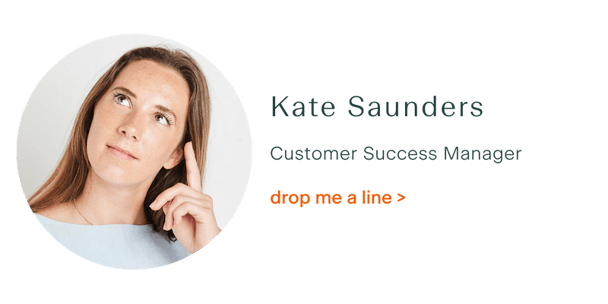
Why invest in a targeted Account Based Selling model
Account based selling models have gained huge popularity in recent years, as businesses experiment with different marketing and sales methodologies to drive continued growth. But how much do you know about this strategy, and can it really benefit your brand? Now’s the time to find out.
What is account based selling?
For many businesses, inbound, volume and velocity marketing models have peaked. Enter, account based selling, by definition a coordinated method of driving audience engagement and sales progress.
Here are the foundational principles:
Only ideal customer profiles are targeted: This data-driven approach is based on analysis of the existing customer base to identify and define the types of customers that generate the most revenue for your business. The stronger the Ideal Customer Profiles (ICPs), the higher the win rates (68% higher in fact!) With ICPs as the foundation, target lists are highly qualified, meaning that sales teams can no longer complain about being fed poor-quality leads.
Organisations need to be aligned: To be successful, account based selling must be a coordinated effort across all customer-facing teams; sales, marketing and customer success. Campaigns involve a sequence of events across multiple communication channels to engage multiple stakeholders across the target account - so all departments need to be on the ball.
Approaches must be relevant and personalised: As a result of this close alignment, sales reps are armed with relevant and valuable content, allowing them to impart the right information to the right buyer at the right time. Outreach is therefore high touch, high frequency and high effort.
The challenges of account based selling
Lead volume: Traditional marketers and sellers are often sceptical of the account based selling model, or reluctant to take the plunge, because they are worried about putting all their eggs in one basket. Mass marketing campaigns can provide thousands of unqualified leads to play with, but this will limit them to a handful.
On the surface, it appears that account based selling demands that sales teams work with fewer leads, and that kind of change can be a scary proposition. However, targeting this handful of highly qualified accounts has the greatest potential to generate the highest revenue accounts, so the choice of quality leads over quantity is well worth the investment.
Some even argue that account based selling is scalable, claiming that a personalised approach to high volumes of accounts is possible with the right tech stack and cross organisational strategy in place.
Campaign budget: As with all marketing and sales campaigns, the first hurdle to overcome is budget, and account based selling models often come with a higher cost per lead. However, there is also a smaller and more focused audience. When looking at a small selection of highly qualified prospects with the greatest potential revenue, you can justify spending more per account.
Secondly, unlike inbound marketing or traditional mass marketing, it’s not easy to allocate an average spend per lead. To market at an account level, you must budget at an account level, considering the size of the organisation and the number of decision makers, departments, and influencers.
Unfortunately, humans - and therefore the accounts you are selling to - are complex and influenced by other factors such as brand awareness, current needs and market competition. As a result, account based selling best practices advise against dividing budget equally across all target accounts, suggesting instead to consider all contributing factors and spend more where big deals are most likely to close.

The benefits of account based selling
Short term benefits: Boost pipeline efficiency, meet sales targets, improve win rates.
Delivering tailored content can increase your likelihood to close a deal by 40%, according to CEB. With marketing and sales teams in sync, you can curate unique customer experiences for targeted accounts. This will resonate more, and reach the targeted person faster thanks to your mapping of decision makers. As a result, your leads are more likely to fly through the sales process and convert.
Research by TOPO found that 1 in 5 accounts targeted converted to sales opportunities, yielding better conversion than traditional approaches. To top that, 91% of ABM marketers have reported the approach increases average deal size by up to 50%.
Long term benefits: Maximise retention, boost customer lifetime value, enable expansion.
In recent years, customer lifetime value has emerged as the most important revenue metric. With a well-defined target account list and an effective process for new and existing opportunities in place, account based selling can significantly increase average customer lifetime value, with some companies reporting a 150% increase.
Taking your first steps towards account based selling
If you are only just beginning your account based selling journey, fear not. Only 18% of businesses have been working on campaigns for two years or more. If we plot this on the Law of Diffusion of Innovation graph, as described by Malcolm Gladwell in The Tipping Point, account based selling is still firmly in the ‘early adopter phase’. Not all businesses have jumped on board yet - so you could claim the head start!
Big ideas start small, so it’s wise to trial any new strategy on a small scale. Creative content, such as handwritten direct mail, can represent an affordable and effective way to reach out to targeted accounts and catch their attention. Consider the multiple touchpoints that direct mail can provide - if a handwritten letter landed in your office, how many colleagues (and potential decision makers) would likely read it?
Alternatively, if your entire organisation is already committed to the account based selling model - great! Add another string to your bow and trial creative content as part of your existing strategy. Inkpact integrations can connect to your existing CRM, so creating a handwritten campaign is just as easy as sending an email.

